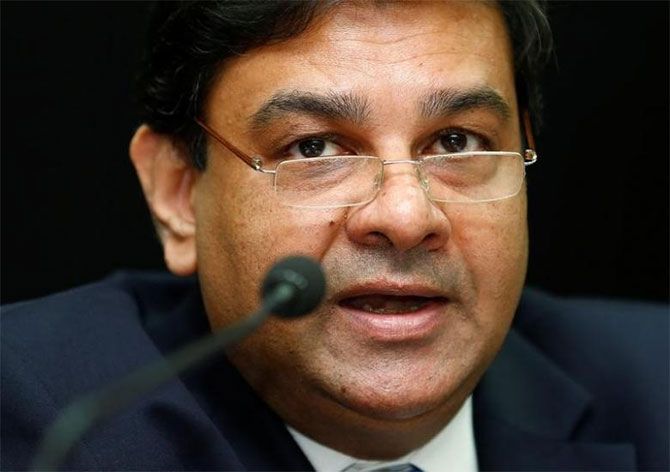Standing committee on finance to also focus on RBI autonomy and citizen's rights.
Amit Agnihotri reports.
 Reserve Bank of India Governor Urjit Patel will face questions on demonetisation and its aftermath when he appears before Parliament's standing committee on finance on Wednesday, January 18.
Reserve Bank of India Governor Urjit Patel will face questions on demonetisation and its aftermath when he appears before Parliament's standing committee on finance on Wednesday, January 18.
Opposition party members on the panel, said sources, were not satisfied with the documents the RBI and the finance ministry had given the committee, in support of Prime Minister Narendra Modi's November 8 announcement banning Rs 500 and Rs 1,000 currency notes.
A major concern of these members was whether the RBI's autonomy was compromised by the note ban decision.
Another issue would be if the decision violated citizens' rights over their legal money in banks, guaranteed by the RBI, with withdrawal limits.
Further, the members would like to know if the cashless economy agenda being pushed by the Centre was feasible as several major economies such as the US, Japan, the UK and Singapore have still not gone completely cashless.
Members would also ask questions on whether the banking system was equipped to implement the note ban.
The fact that at least 100 people reportedly lost their lives in the aftermath of the note ban and if their relatives got compensation would also be thrown at the RBI chief, sources said.
"The note ban has messed up the economy. All the concerns of the public would be raised at the meeting," a lawmaker said on condition of anonymity.
The government had advised the central bank on November 7, 2016, to consider the note ban and the RBI's board recommended the same on November 8, hours before Modi announced the note ban.
"We would like to know how many new currency notes were printed and what is the cash supply situation," said another member.
"We would like to know the impact of note ban on industrial production, agriculture and resultant job losses."
According to the documents submitted before the panel by the RBI and the ministry, the Centre was alarmed at the spurt in circulation of counterfeit Rs 500 and Rs 1,000 notes, and wanted to take immediate action.
The data provided to the panel showed an increase of 76.4% in the supply of fake Rs 500 notes and 109% in fake Rs 1,000 notes over the previous five years.
Fearing that the infusion of fake currency by a neighbouring country contributed to terror funding and black money, the government opted for the note ban.
Estimating the fake currency in India at Rs 400 crore (Rs 4 billion), the government document said authorities had seized fake currencies worth Rs 27.79 crore (Rs 277.9 million) till September 2016.
It was Rs 43.8 crore (Rs 438 million) in 2015 and Rs 41 crore (Rs 410 million) in 2014.











